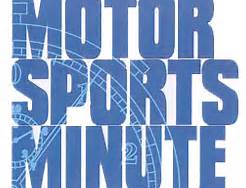Drivers Connect With Fans During Crazy Daytona 500
- Updated: February 29, 2012
Much like the brawl between Cale Yarborough and the Allisons after the 1979 Daytona 500 sparked interest among the non-racing crowd, the great fireball that ignited when Juan Pablo Montoya’s car collided with a jet dryer provided the primary topic of conversation in mainstream America on the morning following this year’s bizarre edition of “The Great American Race.”
In the same circumstances that draw viewers to tune in to helicopter coverage of California high-speed chases in anticipation of what will happen next, all eyes were glued to television sets as the raging inferno was brought under control and the massive cleanup began. And much like the 1979 donnybrook demonstrated that NASCAR is made up of real people with very real emotions, which lead to an increase in popularity, the events that transpired during the red flag Monday night should play well with the American public.
As everyone learned that the Tide laundry detergent in their basements could be combined with their leaf blowers and garden hoses to contain any massive jet fuel spill that came their way, the actions of the drivers during the delay demonstrated to viewers that unlike other sports, NASCAR’s athletes are everyday people that can relate to the fans.
As soon as the cars came to a stop, Kyle Busch and others immediately hopped out and ran to infield Port-A-Johns while Brad Keselowski took out his phone and began to tweet pictures of the crash from inside his car. Keselowski’s tweets reportedly gained 100,000 new followers during the delay as viewers began to realize they were actually able to communicate with a participant in a major sporting event in real time from their couch. Imagine being able to converse with Eli Manning or Tom Brady on the sidelines during the Super Bowl or Albert Pujols on the bench in the World Series. It would never happen as the other major sports fine their players for using Twitter during competition.
When Keselowski was joined by Dale Earnhardt Jr. and other drivers in an impromptu tweetup, the sudden interactive connection with viewers at home and fans in the stands provided a welcome relief to the two hour down time.
While questions arose about the legality of having an electronic device in the car with the new computerized fuel injection rules, NASCAR was smart to allow and encourage the social media activity. The sport grew on the notion of driver accessibility and a fan sense of belonging found nowhere else in the sports world. When fans and in this case viewers feel that they are actually a part of the event, they will return each week and bring with them their loyal support.
Finally, overshadowed by all the craziness was Matt Kenseth’s second Daytona 500 victory, joining Richard Petty, Cale Yarborough, Bobby Allison, Dale Jarrett, Sterling Marlin, Michael Waltrip, Bill Elliott, and Jeff Gordon as the only multi-time winners of NASCAR’s showcase event. For many Wisconsin fans and racers, the victory invoked a great sense of pride as many remember Kenseth traveling the same local circuit they continue to do today at tracks such as Jefferson, Slinger, Kaukauna, and Madison. Many also have memories of hanging out in the pits or taverns after the races back in the day with Matt and crew members such as Jimmy Fennig, Justin Nottestad, Todd and Matt Millard, Austin Konetski, and Jimmy Watson when NASCAR and the “big time” seemed so far away. The #17 team carries a big part of the Wisconsin racing scene with it and to see its members enjoy success on NASCAR’s biggest stage provides satisfaction and validates the effort and competition that remains in place today.




![Porsche Fabcar crosses the finish line. [Robert Madara photo]](https://racingnation.com/wp-content/uploads/2023/11/FabcarFinish-108x70.jpeg)

![USF2000 Pro driver Lindsay Brewer. [Eddie LePine Photo]](https://racingnation.com/wp-content/uploads/2023/06/IMG_8825_2-108x70.jpg)